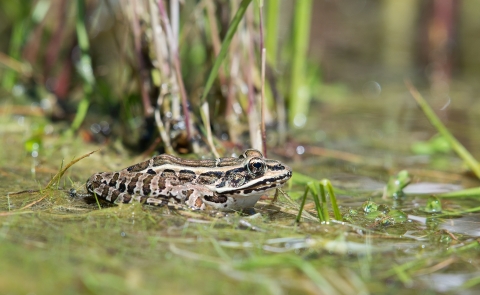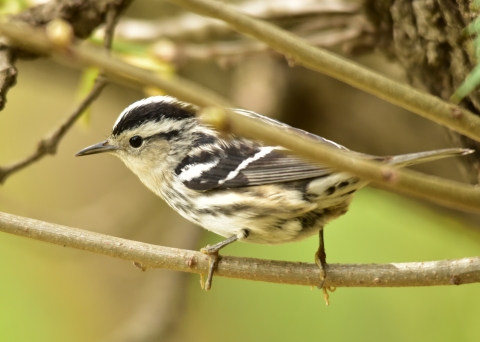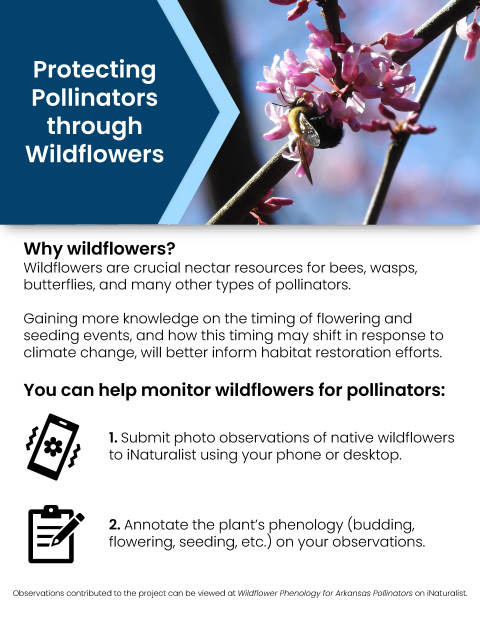Seasons of Wildlife
Wildlife Diversity
Felsenthal National Wildlife Refuge's (NWR) habitat diversity supports a great deal of wildlife species. White-tailed deer, black bears, bobcats, coyotes, river otters, foxes, rabbits, and squirrels are some examples of our mammalian species. An impressive array of reptiles, amphibians, fish, and invertebrates can also be found here. American alligators have been known to nest on the refuge. During the spring and summer months, several species of frogs can be heard calling from the water’s edge and turtles are often seen basking in the sun.
Over 1,150 species of plants and animals have been documented on the refuge. This number continues to increase as our refuge biologists, researchers from various universities, and volunteer citizen scientists document more during their time on the refuge.
Migratory Waterfowl
Felsenthal NWR lies within the Mississippi Flyway – the North American "highway in the sky" that hundreds of bird species use annually when travelling between their breeding grounds and wintering grounds. Vast numbers of waterfowl, shorebirds, neotropical songbirds, and birds of prey use the Mississippi Flyway during their migration.
Waterfowl begin arriving on the refuge in September, with mallards, green and blue-winged teal, shovelers, pintails, gadwalls, and hooded mergansers among some of the waterfowl that winter here. In some years, between 100,000 and 300,000 waterfowl have been seen wintering in Felsenthal NWR. Predatory birds, such as bald eagles, follow waterfowl during their migration as an important food source.
Neotropical Songbirds
From the spring to early fall, Felsenthal NWR becomes a haven for a myriad of songbirds and shorebirds. Many species stop in the spring and fall to replenish energy reserves for the long journey to and from wintering areas in Central and South America. Other songbirds such as the northern parula, prothonotary warbler, and American redstart utilize the refuge for nesting habitat. Nearly 100 species of birds are known to nest in the area, and over 230 species of birds have been documented on the refuge.
Felsenthal NWR has been recognized by the National Audubon Society as a globally Important Bird Area. Visitors are encouraged to submit their birding observations online to the global eBird database. The Cornell Lab of Ornithology’s eBird and Merlin mobile apps are excellent resources for both beginner and advanced birders.
Click here to visit eBird’s website. Both the eBird app and Merlin bird ID app can be downloaded for free on most mobile app stores.
To learn more about Felsenthal NWR as part of an Important Bird Area, visit Audubon’s website here.
Featured Species
Become a Citizen Scientist!
Help contribute to our understanding of animals and plants by submitting your observations of animals and plants on iNaturalist. This program allows you to join a community of naturalists across the world to collect and share observations of life. The community can help you learn and identify species, track invasive species invasive species
An invasive species is any plant or animal that has spread or been introduced into a new area where they are, or could, cause harm to the environment, economy, or human, animal, or plant health. Their unwelcome presence can destroy ecosystems and cost millions of dollars.
Learn more about invasive species , and monitor phenological changes. By recording and sharing your observations, you can contribute research-quality data for scientists working to better understand and protect nature.
You can submit observations online using the free iNaturalist mobile app or your computer. Observations that participating citizen scientists have recorded within the refuge can be viewed here: Felsenthal NWR iNaturalist



